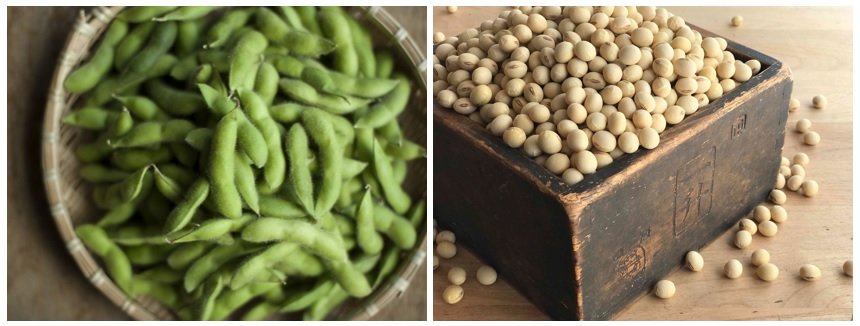Akebono Daizu
Producing Area
"Akebono Daizu" is a soybean of large grain size, which has been cultivated in the production area for more than 100 years. Compared to general soybeans, it is about twice as heavy. Its sweetness is also manifested by the fact that its sugar and sucrose contents are around 20% and 40% higher compared to other varieties, respectively. Sucrose is the main constituent of sugar.
It is highly rated by processors of miso and tofu because its high sugar enhances the sweetness of final products. Due to its scarcity and high quality, "Akebono Daizu" is sold at a high price. Its "edamame (1)", which is immature soybean, is also large and very sweet.
Only seeds of a native variety cultivated in Akebono district in the production area are used.
Shipping standards require that soybeans have no pests and insects, not be too immature, not wet, and clean for edamame. For ripe soybean, standards require that not more than 20% of the beans have prominent insect or other damage and that there are no grains of other species or foreign matter.
The production area has well-draining soil and receives proper moisture supply from morning mist, thus making it appropriate for soybean cultivation. The daily temperature difference between day and night is at least 10°C from October, when edamame matures, until December, when ripe soybeans are harvested. The difference produces the characteristic sweetness.
To prevent the soybean from crossing with other varieties, producers have carefully isolated the fields, selected seeds for generations and maintained the large grain size of "Akebono Daizu".
Shipping of edamame started in around 1970, when the soybean, "Akebono Daizu", was named after Akebono district.
As of fiscal year 2018, the production area is approximately 28ha, and there are 141 producers.
- Edamame is an immature soybean harvested together with twigs when the soybean is still green. The beans in the pods are boiled, and the beans are eaten. It is one of the typical ways of eating soybeans in Japan and China.


